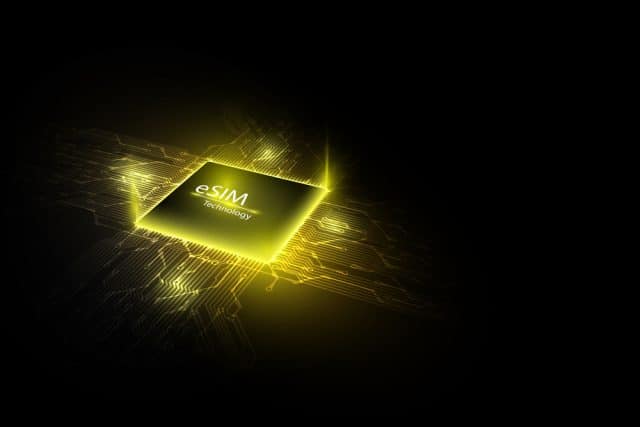Does eSIM solve a chip shortage problem?

Smartphones today feature an array of cutting-edge technologies, from folding touchscreens to automatic crash detection. One less flashy but equally exciting of these innovations is the eSIM. While still new, this concept is catching on quickly and could dramatically alter the smartphone market.
Some people hope eSIM technology will help address one of smartphones' most significant challenges today -- the chip shortage. As phone manufacturers across the globe struggle to meet demand, will eSIM be the answer to their supply chain woes? Here’s a closer look at this technology and its potential impact.
SEE ALSO: Biggest tech acquisitions of 2022
What Is eSIM?
eSIM -- short for embedded SIM -- is an all-digital replacement for traditional, physical SIM cards. The first phones with built-in eSIMs came out a few years ago with the Google Pixel 2 and are now a fairly common sight. Many models today support both conventional SIM cards and eSIMs, but that could be changing.
The recently released iPhone 14 has no SIM card slot for U.S. models, likely signaling a broader move toward eSIM-only phones. Companies like Apple and some tech enthusiasts point out this shift could have several advantages.
Because eSIMs are embedded in your device, no one can remove and tamper with them. Changing carriers is also easier because you don’t have to physically swap cards and you can use multiple in one phone. It may also bring some performance benefits, as conventional SIMs can cause sound issues on iPhones if they’re out of position.
How eSIMs Could Impact the Chip Shortage
Of course, the big question is how eSIM technology could affect the semiconductor shortage. Because eSIMs are all-digital, making an eSIM-only phone means smartphones require one less chip to work. That could help manufacturers and carriers get new phones into customers’ hands faster.
Mitigating these supply chain issues is a leading concern for manufacturers today. More than one in five Americans swapped brands or stores when facing shortages, so boosting production is a matter of customer loyalty. Requiring fewer parts to make a functional phone could help side-step the chip shortage and meet demand faster, avoiding customer loss.
For users, that means new phones could become more accessible. You wouldn’t have to wait for carriers to get enough semiconductors to make SIM cards because the technology comes embedded in the phone.
Remaining Issues
While eSIMs could help ease the semiconductor shortage, it’s important to note they won’t end it entirely. An eSIM-only phone requires one less chip, but that doesn’t mean it’s chip-free. The iPhone 13 has over a dozen chips from at least three manufacturers. Even without a SIM card to worry about, that means semiconductor shortages will still delay production.
Rising eSIM popularity could allow semiconductor manufacturers to focus more resources on other chips, as they don’t have to make as many SIM cards. That could help boost production, but it’s likely not enough to overcome the issue entirely.
It’s also unclear how quickly the eSIM-only phone will become standard. While the industry will likely move in that direction, not every carrier supports eSIMs and managing these systems is expensive for phone companies. Consequently, it could take a while for eSIM to have a noticeable impact on chip shortages.
ESIM Is an Important Technology, But Not a Cure-All
Overall, eSIM does offer some relief for the chip shortage, but it’s not enough on its own to end the issue. It is still uncertain how much it will affect phone availability and how soon that will happen.
Despite the uncertainty, eSIM remains a critical development. Smartphones will become more secure and convenient for customers as the technology becomes more popular, chip shortage or not. While it may not change the industry as dramatically or as soon as some people may like, it does represent a significant step forward.
Image credit: panuwatstocker/depositphotos.com

Devin Partida writes about AI, apps and technology at ReHack.com, where she is Editor-in-Chief.